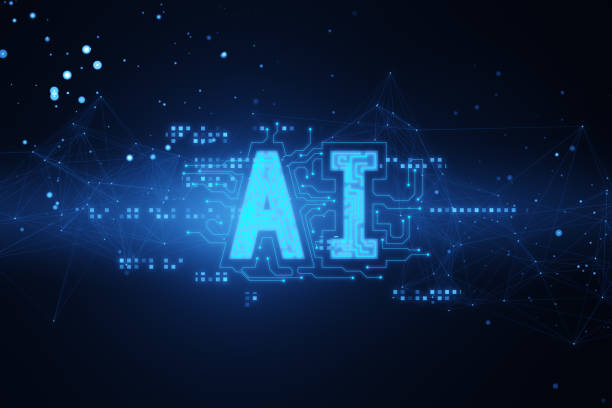What is On-Page SEO and Why Does it Matter?

On-page SEO, also known as on-site SEO, refers to the set of actions that are performed within your website to improve your site’s ranking in search engine results.
These actions include optimizing content, title tags, meta descriptions, URL structure, and other HTML elements.
The importance of on-page SEO stems from the fact that it helps search engines better understand the content of your site and show it to relevant users.
In other words, on-page SEO forms the foundation of your site’s SEO.
Without a strong on-page SEO strategy, your efforts in the field of off-page SEO and content marketing will not achieve the desired result.
On-page SEO tells search engines what your site is about and why they should show it in search results.
In fact, by optimizing the internal elements of the site, you significantly increase the chance of being seen and attracting organic traffic.
On-page SEO helps to increase site traffic, improve user experience, and increase conversion rates.
A site optimized for on-page SEO is easily found by users, its content is understandable, and it encourages users to take desired actions (such as buying, registering, or contacting).
Therefore, investing in on-page SEO is a valuable investment for any business looking for online growth and success.
The importance of on-page SEO should not be ignored because it plays a significant role in the success of a website.
Are you disappointed with the low conversion rate of your online store?
Rasaweb is your definite solution with professional online store website design!
✅ Increase your sales and income
✅ Unparalleled user experience for your customers
⚡ Get a free consultation now!
Keyword Research for On-Page SEO
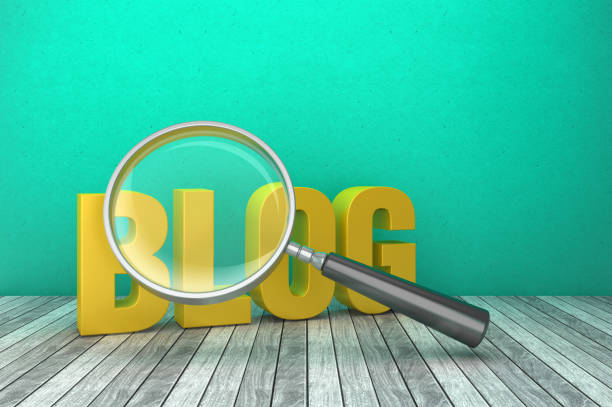
Keyword research is the process of finding the words and phrases that users search for in search engines to find the information, products, or services they need.
This process is the first and essential step in any SEO strategy.
Choosing the right keywords helps you create content based on the needs of your target audience and increase your chances of being seen in search results.
To conduct keyword research, you can use various tools such as Google Keyword Planner, Ahrefs, and SEMrush.
These tools help you check the search volume, competition, and other important metrics of keywords.
You can also find new ideas for keywords using manual methods such as checking frequently asked questions in forums and websites related to your industry.
When choosing keywords, pay attention to two important points.
First, the keywords should be relevant to your business and website content.
Second, the keywords should have a suitable search volume and low competition.
In other words, you should choose words that users are looking for, but the competition to rank for them is not high.
After choosing keywords, you should use them in title tags, meta descriptions, headings, and the main text of your content.
Optimizing content with the right keywords is one of the most important factors in on-page SEO.
On-page SEO helps you be on the first page of Google.
Title Tag and Meta Description Optimization
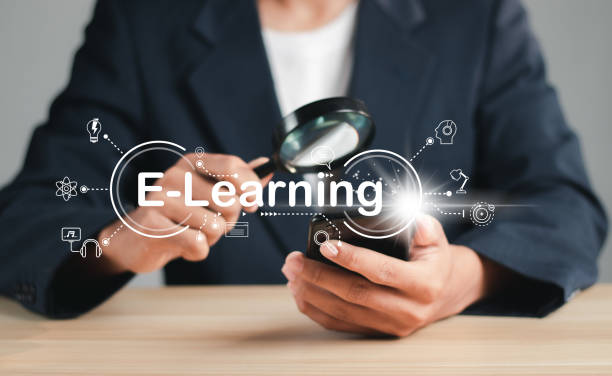
The title tag and meta description are two important HTML elements that are displayed in search results.
The title tag is the title of your page that is displayed at the top of the search results.
The meta description is a summary of your page’s content that is displayed below the title tag.
Optimizing these two elements helps you grab users’ attention and encourage them to click on your site’s link.
To optimize the title tag, use your main keywords and write an attractive and catchy title.
The length of the title tag should not exceed 60 characters.
To optimize the meta description, provide an accurate and engaging summary of your page’s content and use relevant keywords.
The length of the meta description should not exceed 160 characters.
The title tag and meta description are the first things users see in search results.
Therefore, optimizing them is a great opportunity to attract organic traffic.
By writing attractive and relevant title tags and meta descriptions, you can increase your click-through rate (CTR) and improve your site’s ranking in search results.
Optimizing the title tag and meta description is one of the most important factors in on-page SEO.
Also, on-page SEO helps you have a more user-friendly website.
| Element | Description | Best Practices |
|---|---|---|
| Title Tag | The title of the page that is displayed in search results. | Use main keywords, catchy title, length less than 60 characters |
| Meta Description | Summary of the page’s content that is displayed in search results. | Provide an accurate summary, use relevant keywords, length less than 160 characters |
Content Optimization for On-Page SEO
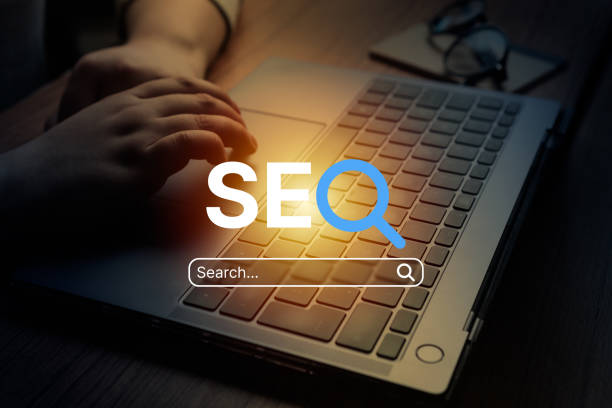
Content is the king of SEO.
High-quality, relevant, and valuable content not only attracts users but also impresses search engines.
To optimize content for on-page SEO, you should pay attention to a few important points.
First, your content must be unique and original.
Avoid copying other people’s content and try to produce content that has added value for users.
Second, your content must be relevant to your target keywords.
Use your keywords naturally and in the right place in the text.
Third, your content should be readable and understandable.
Use short paragraphs, headings, and subheadings to make it easier for users to read the content.
Fourth, update your content regularly.
Old and outdated content loses its value and may have a negative impact on your site’s ranking.
By producing high-quality and optimized content, you can increase your site’s organic traffic, improve your conversion rate, and introduce your brand as a reference in your industry.
Content optimization is one of the most important factors in on-page SEO.
On-page SEO means understanding the user’s needs and answering them.
On-page SEO helps you optimize your content for search engines.
Are you disappointed with the low conversion rate of your online store?
Rasaweb is your definite solution with professional online store website design!
✅ Increase your sales and income
✅ Unparalleled user experience for your customers
⚡ Get a free consultation now!
URL Structure Optimization
![]()
The URL structure of your site plays an important role in SEO.
Short, descriptive URLs that include keywords help search engines better understand your page’s content and show it to relevant users.
To optimize the URL structure, you should pay attention to a few points.
First, keep your URLs short and readable.
Avoid long and complex URLs.
Second, use your main keywords in URLs.
Third, use hyphens (-) to separate words in URLs.
Fourth, use lowercase letters in URLs.
Fifth, design the URL structure of your site logically and hierarchically.
For example, the URLs of product pages should be in the subcategory of the URLs of product categories.
By optimizing the URL structure, you can improve the user experience, increase your site’s ranking in search results, and increase your chances of being seen on social networks.
URL structure optimization is one of the important factors in on-page SEO.
In fact, on-page SEO is a macro strategy.
Image Optimization for On-Page SEO

Images play an important role in the attractiveness and engagement of users with your site.
But unoptimized images can slow down your site’s loading speed and negatively impact SEO.
To optimize images for on-page SEO, you should pay attention to a few important points.
First, optimize the size of your images.
Avoid large and bulky images and try to reduce the size of your images without compromising quality.
You can use online image compression tools such as TinyPNG and ImageOptim.
Second, use the appropriate formats for images.
JPEG formats are suitable for images with many colors, and PNG formats are suitable for images with graphics and text.
Third, use the alt tag to describe images.
The alt tag helps search engines understand the content of your images and display them in search results.
Fourth, choose descriptive filenames for your images that include relevant keywords.
By optimizing images, you can increase your site’s loading speed, improve user experience, increase your site’s ranking in search results, and increase your organic traffic through image search.
Image optimization is one of the important factors in on-page SEO.
Increase your site’s ranking by using on-page SEO.
Internal Linking
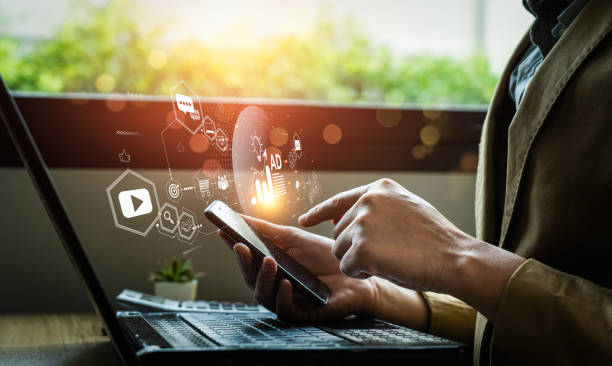
Internal linking is the process of creating links between different pages of your site.
Internal linking helps search engines better understand the structure of your site and recognize the importance of different pages.
Also, internal linking helps users to easily navigate your site and find the information they need.
For internal linking, you should pay attention to a few points.
First, the links should be relevant to the content of the destination page.
Avoid linking to irrelevant pages.
Second, use appropriate anchor text for the links.
The anchor text should be descriptive and include relevant keywords.
Third, avoid using too many links on one page.
Too many links can disrupt the user experience and reduce the value of the links.
Fourth, link the important pages of your site to other pages to show their importance to search engines.
With proper internal linking, you can improve the structure of your site, improve user experience, increase your site’s ranking in search results, and increase your organic traffic.
Internal linking is one of the important factors in on-page SEO.
Internal linking helps to improve SEO.
On-page SEO helps you attract more users to your site.
| Type of Internal Link | Description | Advantages |
|---|---|---|
| Link to Category Pages | Linking from product pages to related category pages | Improve site structure, guide users to relevant pages |
| Link to Related Content | Linking from one article to other articles with similar topics | Increase user engagement, reduce bounce rate |
| Link to Important Pages | Linking from different pages to the main and important pages of the site | Increase the credibility of important pages, improve ranking in search results |
Site Speed Optimization

Site speed is one of the important factors in ranking a site in search results.
Users hate slow and late-loading sites, and search engines prefer faster sites.
To optimize site speed, you should pay attention to a few points.
First, use a quality hosting.
Inappropriate hosting can significantly reduce your site speed.
Second, optimize your images (as explained in the previous section).
Third, use cache plugins.
Cache plugins store your site pages as static and increase their loading speed.
Fourth, use a CDN (Content Delivery Network).
CDN stores your site’s content on different servers around the world and chooses the closest server for users to load the content.
Fifth, compress your HTML, CSS, and JavaScript codes.
Compressed codes are smaller in size and load faster.
Sixth, reduce the number of your HTTP requests.
Each HTTP request increases your site’s loading time.
By optimizing site speed, you can improve the user experience, reduce the bounce rate, increase your site’s ranking in search results, and increase your organic traffic.
Site speed optimization is one of the important factors in on-page SEO.
Check your site’s on-page SEO.
On-page SEO helps you have a successful website.
Did you know that poor online store design can drive away up to 70% of your potential customers? Rasaweb transforms your sales with professional and user-friendly online store website design.
✅ Significant increase in sales and income
✅ Full optimization for search engines and mobile
⚡ [Get a free consultation from Rasaweb]
Responsive Optimization

A responsive site means that the site is compatible with different devices (such as mobile phones, tablets, and desktop computers).
Given the increasing use of mobile phones for searching the internet, having a responsive site is an essential factor in SEO.
Google prioritizes responsive sites in search results.
To optimize responsiveness, you should use a responsive template and design your site’s content so that it is displayed correctly on different devices.
You should also optimize your site speed on mobile devices.
By optimizing responsiveness, you can improve the user experience, increase your site’s ranking in search results, and increase your organic traffic.
Responsive optimization is one of the important factors in on-page SEO.
Responsive optimization helps you attract more users to your site.
Having a responsive site is one of the most important factors in the success of a website.
Take on-page SEO seriously.
Monitoring and Analysis of On-Page SEO
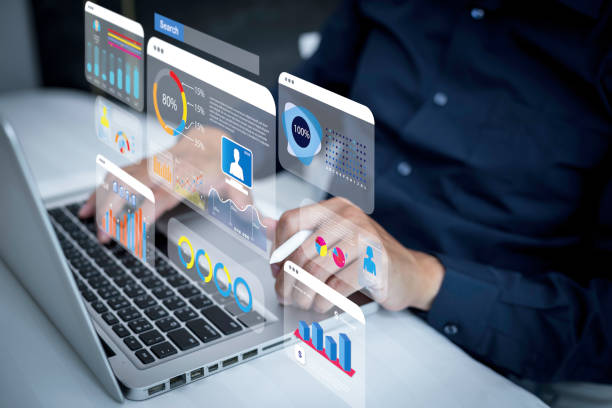
After taking on-page SEO actions, you should regularly monitor and analyze your results.
By monitoring and analyzing the results, you can identify the strengths and weaknesses of your strategy and make the necessary changes.
To monitor and analyze on-page SEO, you can use various tools such as Google Analytics and Google Search Console.
Google Analytics helps you track your site’s traffic, user behavior, and conversion rate.
Google Search Console helps you check your site’s performance in search results, identify your site’s errors, and submit your sitemap to Google.
By monitoring and analyzing on-page SEO, you can improve your strategy, increase your organic traffic, and achieve your business goals.
Analyze on-page SEO and use its results.
Monitoring and analysis is one of the important steps in on-page SEO.
Improve your website’s on-page SEO by analyzing the data.
On-page SEO is an ongoing process.
Frequently Asked Questions
| Row | Question | Answer |
|---|---|---|
| 1 | What is On-Page SEO? | On-page SEO refers to the set of actions that are performed within the website (on its pages) to improve the site’s ranking in search engine results. This includes optimizing content, site structure, and HTML codes. |
| 2 | Why is On-Page SEO important? | On-page SEO helps search engines better understand the content of the page and determine whether that page is relevant and valuable to users’ searches. This better understanding leads to a higher ranking. |
| 3 | What is the first and most important step in On-Page SEO? | Keyword Research is the most important initial step. By finding the right keywords, you can produce targeted content that is relevant to users’ needs. |
| 4 | What is the role of the Title Tag in On-Page SEO? | The title tag is one of the most important ranking factors and should include the main keyword. This tag is displayed as the title of the page in the search results and affects the click-through rate (CTR). |
| 5 | What is the importance of Meta Description? | The meta description does not directly affect the ranking, but by providing an attractive summary of the content of the page in the search results, it can encourage users to click and thus increase the click-through rate (CTR). |
| 6 | Why is the use of headings (H1, H2, etc.) important in the content? | Headings help to structure the content and improve readability for users and search engine crawlers. The use of keywords in headings also helps the search engine to better understand the topic. |
| 7 | What does Image Optimization in On-Page SEO include? | It includes compressing images to reduce the size, using descriptive and related filenames, and filling in the Alt tag (alternative text) with related keywords to help search engines understand the content of the image. |
| 8 | What is meant by Internal Linking in On-Page SEO? | Internal linking refers to creating links between different pages of a website. This helps to distribute page equity (Link Equity), improve user experience, and help search engine crawlers discover new pages. |
| 9 | Why is Page Speed important for On-Page SEO? | Page loading speed is a direct ranking factor and greatly affects user experience. Slow pages can increase the Bounce Rate and reduce user engagement. |
| 10 | What role does high-quality content play in On-Page SEO? | High-quality, comprehensive, unique, and valuable content for the user is the core of On-Page SEO. This content not only attracts and retains users, but also sends positive signals to search engines and helps to improve the ranking. |
And other services of Rasa Web advertising agency in the field of advertising
Intelligent data analysis: A combination of creativity and technology for online growth by managing Google Ads.
Intelligent linking: A new service to increase the analysis of customer behavior through precise audience targeting.
Intelligent custom software: Transform user interaction with precise audience targeting.
Intelligent direct marketing: A combination of creativity and technology for user interaction through SEO-oriented content strategy.
Intelligent content strategy: Professional optimization for analyzing customer behavior using user experience customization.
And more than hundreds of other services in the field of internet advertising, advertising consulting and organizational solutions
Internet Advertising | Advertising Strategy | Advertorials
Resources
Zoomit’s Comprehensive On-Page SEO Guide
,On-Page SEO Training Video
,Faraz Network On-Page SEO
,Didar Ads On-Page SEO
? Are you ready to transform your business in the digital world? Rasa Web Marketing Digital Agency, specializing in Corporate Website Design and providing comprehensive online marketing solutions, is with you to have a powerful and effective presence on the web.
📍 Tehran, Mirdamad Street, next to the Central Bank, South Kazerun Alley, Ramin Alley No. 6


